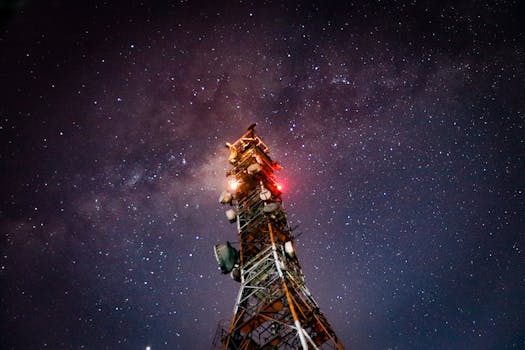
The Rise of Mega-Constellations: Latest Updates in Satellite Telecommunications
The Rise of Mega-Constellations: Latest Updates in Satellite Telecommunications. The concept of mega-constellations has been around for several years, but it’s only recently that we’ve seen significant progress in this field. Mega-constellations refer to a large group of satellites that work together to provide global internet coverage. This technology has the potential to revolutionize the way we communicate, making it possible for people in remote areas to access the internet and stay connected with the rest of the world.
One of the key players in the development of mega-constellations is SpaceX, founded by Elon Musk. The company has launched several satellites as part of its Starlink constellation, which aims to provide global internet coverage. Other companies, such as Amazon’s Kuiper Systems and OneWeb, are also working on their own mega-constellations. These constellations are designed to provide high-speed internet connectivity to areas where traditional fiber-optic cables are not available.
How Mega-Constellations Work
Mega-constellations work by launching a large number of small satellites into low Earth orbit. These satellites are equipped with transceivers that allow them to communicate with each other and with ground stations. The satellites are designed to be relatively small and inexpensive, making it possible to launch a large number of them into space. This approach allows for greater flexibility and scalability than traditional satellite systems, which often rely on a single large satellite to provide coverage.
The satellites in a mega-constellation are typically launched into a low Earth orbit, which is around 500-1,000 kilometers above the Earth’s surface. From this orbit, the satellites can communicate with each other and with ground stations using radio waves. The signals are then transmitted to the ground stations, where they are processed and transmitted to the internet. This allows users to access the internet from anywhere in the world, as long as they have a clear view of the sky.
Benefits of Mega-Constellations
The benefits of mega-constellations are numerous. One of the most significant advantages is that they can provide global internet coverage, including in areas where traditional fiber-optic cables are not available. This can help to bridge the digital divide and provide access to information and communication for people in remote and underserved areas. Mega-constellations can also provide backup connectivity in case of natural disasters or other outages, ensuring that critical communication systems remain online.
In addition to providing internet connectivity, mega-constellations can also be used for other applications, such as navigation, Earth observation, and scientific research. The large number of satellites in a mega-constellation can provide a high level of redundancy, making it possible to continue operating even if some of the satellites fail. This can be especially important for critical applications, such as navigation and communication systems.
Challenges and Concerns
While mega-constellations offer many benefits, there are also several challenges and concerns that need to be addressed. One of the biggest concerns is the potential for space debris, as the large number of satellites in a mega-constellation can increase the risk of collisions and other accidents. There are also concerns about the impact of mega-constellations on the environment, including the potential for interference with other satellite systems and the effects on the Earth’s atmosphere.
Another challenge is the need for regulatory frameworks to govern the development and operation of mega-constellations. This includes issues such as spectrum allocation, licensing, and liability in case of accidents. The development of mega-constellations also requires significant investment, which can be a barrier for some companies and countries.